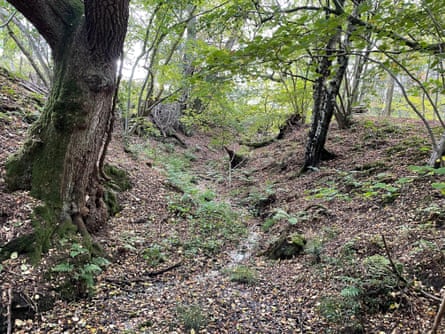From The Guardian,
Edited by - Amal Uawatta,
Almost a month past the equinox, this extended spell of warm clear days means one can almost forget what’s coming.
I set out past a little stone church and the hawthorn-scrubbed motte of a castle demolished in 1349, and follow a sunken path steeply downhill among oak, sycamore, mixed conifers and rowan. In a stand of beeches there are scufflings and snaps, as though animals large and small were on the move. It’s a minute before I realise the disturbance is caused by beechnuts dropping through an elaborate marble run. The sound is syncopated, like a clockwork contraption distributing one for you, and you, one, two for you, one for you.
I cross a field where a path peters out, but I know where it once headed. By a crooked oak, I find moving water. The flow is barely discernible but I can hear it, the tiniest blip-blip-blip. The reflections shiver. A little way on, the source is marked by alder and birch surrounding a patch of bright green wood sorrel and grass: Lady Keld Spring. The name is the kind of tautologous hybrid that’s common in the former Danelaw, where the Old Norse keld meant spring or well.

In winter this lush oval is a pool, but now the only open water is in the gravel-bedded, mossy-sided springhead. Floating in a reflection of the sky are russet and yellow leaves, a single feather, a cluster of nine rowan berries and a sprinkling of birch seeds.
I sit, squinting in the low sun that sidelights golden birch, emerald fern, rowans the colour of tarnished brass. Everywhere there are fungi and fruits: acid green crab apples and the berries of rowan and holly, fingerprick red. A buzzard calls, a breeze shifts the leaves. Gnats dance.
I’m moved to make a vow to this sweet Earth and this beautiful, amenable land: “They think they are coming for you, with their drilling rigs and their chainsaws, their investment zones and their road schemes, their streamlining of regulations and their pathological obsession with growth. My promise is this. That I will do what I can, as long as I live, to stop them.”

Comments
Post a Comment